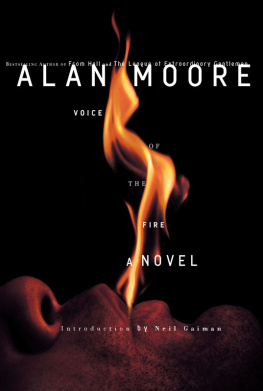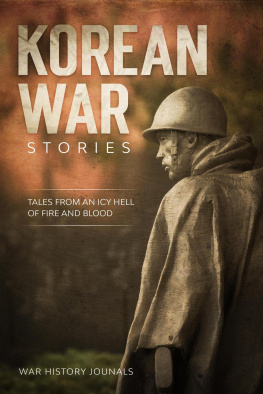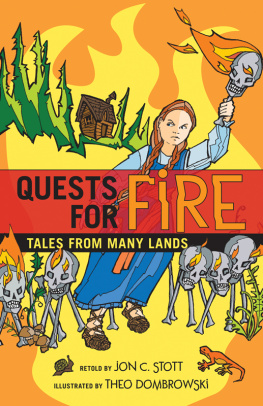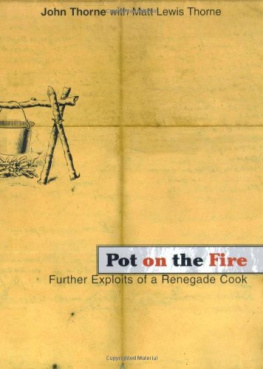Contents
Also by Alan Moore
V for Vendetta (with David Lloyd)
Watchmen (with Dave Gibbons)
Brought to Light (with Bill Sienkiewicz)
A Small Killing (with Oscar Zarate)
From Hell (with Eddie Campbell)
The League of Extraordinary Gentlemen (with Kevin ONeill)
The Mirror of Love (with Jos Villarrubia)
Lost Girls (with Melinda Gebbie)
VOICE of the FIRE
[a novel]
Alan Moore
Illustrations by Jos Villarrubia
Introduction by Neil Gaiman
Top Shelf Productions
Atlanta / Portland
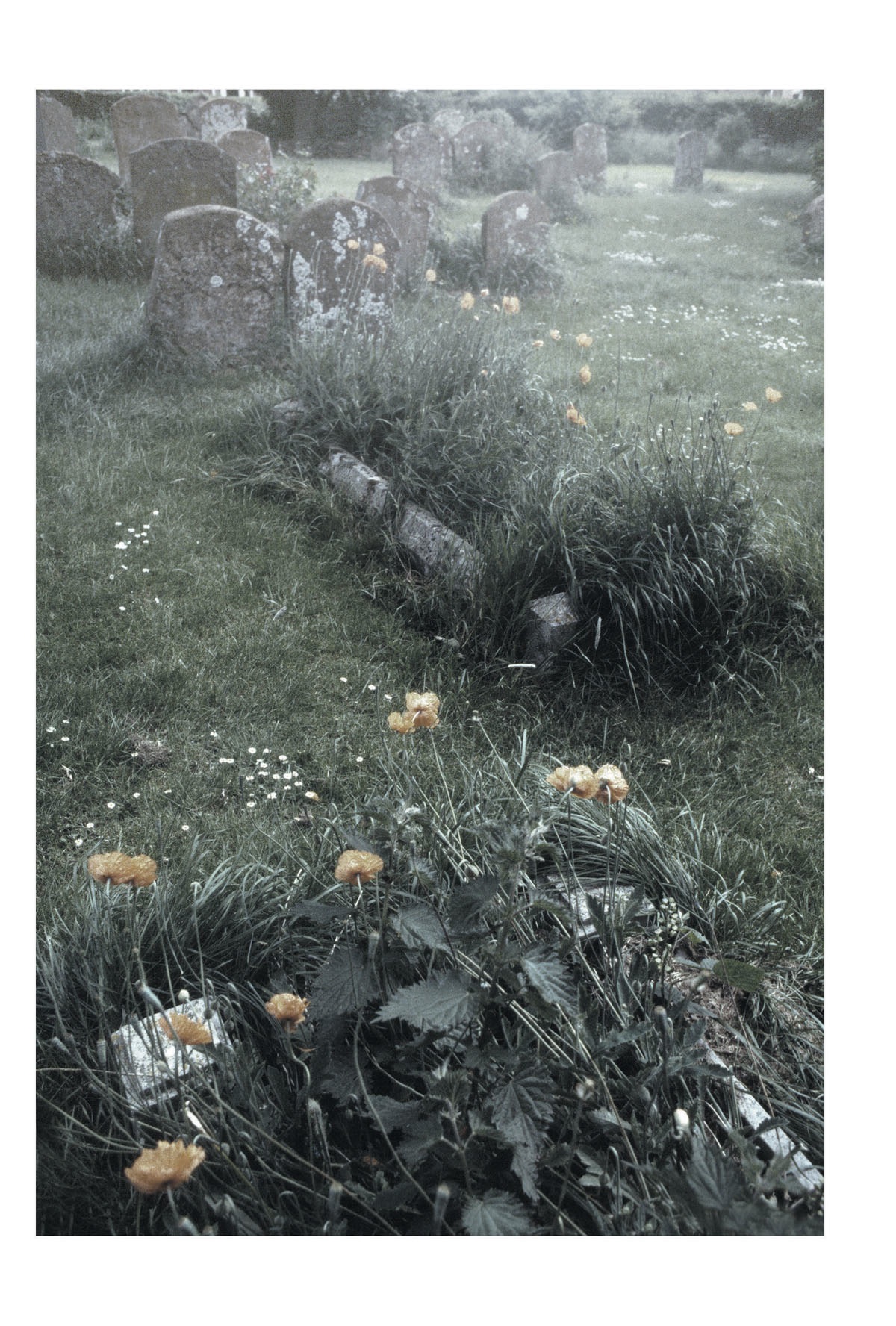
Voice of the Fire 1996, 1997, 2003 Alan Moore.
Introduction to this edition 2003 Neil Gaiman.
Color plates for this edition 2003 Jos Villarrubia.
Published by Top Shelf Productions, Chris Staros & Brett Warnock,
PO Box 1282, Marietta, GA 30061-1282, USA.
Top Shelf Productions and the Top Shelf logo
are registered trademarks of Top Shelf Productions, Inc.
All Rights Reserved.
This is a work of fiction.
No part of this book may be reproduced without permission,
except for small excerpts for purposes of review.
Dustjacket design by Chip Kidd.
Book design by Brett Warnock.
Copy editing by Robert Venditti.
Originally published in Great Britain by Victor Gollancz in 1996.
Visit our online catalog at www.topshelfcomix.com.
Moore, Alan
Voice of the Fire / Alan Moore
ISBN 1-891830-44-9
1. Fiction
2. Historical Fantasy
For Sylve and Ern
their fossil streets;
a coal-seam of the heart
Introduction
By Neil Gaiman
One measures a circle starting anywhere, said Alan Moore, quoting Charles Fort, at the beginning of his exploration of Victorian society, From Hell. The circle here is temporal, and the circle is geographical. It is a circle made of black dogs and November fires, of dead feet and severed heads, of longing and loss and lust. It is a circle that will take you several miles and six thousand years.
I am sitting in a room in the Netherlands, in an anachronistic Victorian castle, writing an introduction to a book called Voice of the Fire, by Alan Moore. It is not the best introduction to this book, of course. The best introduction is the final chapter of the book, written in a smoky room in November 1995 by Alan Moore in the voice of Alan Moore, dry and funny and much, much too smart for our own good, written in a room piled with the books he has used as research, written as a final act of magic and faith.
One measures a circle starting anywhere. Not, of course, everywhere. One circle, one place. This is Northamptons story, after all.
If this were a linear narrative we would follow Northampton, voice by voice, head to head and heart to heart, from a stopping place in a pig pen for a half-witted youth, through Ham Town to a bustling medieval town to now. But the narrative, like the town, is only linear if you want it to be, and if you expect to get a prize for getting to the end youve already lost. Its a carousel ride, not a race, a magical history tour, no more evolutionary than it is revolutionary, in which the only prizes are patterns and people and voices, severed heads and lamed feet, black dogs and crackling November flames which repeat like the suits of a deranged tarot deck.
When the book was published, in 1996, it made less impression on the world than it should have: it was a paperback original, which began, with no explanation, with the personal narrative of a half-witted man-child, at the end of the stone age his mother has died, his nomadic tribe has abandoned him, he will face the evil and trickery of those smarter than he is (everyone is smarter than he is), and he will also discover love, and learn what a lie is, and the fate of the pig in the Hob-mans hoghouse. He will also tell his story in the most idiosyncratic narrative since Russell Hobans Riddley Walker (or, perhaps, Alan Moores Swamp Thing story Pog), using a tiny vocabulary, the present tense, and an inability to tell dreams from reality. It is not the easiest of starting points, although it is a tour de force, and it sets up all the elements that will recur through the book. The shagfoal are here, huge black dogs that run in dreams and darkness, and the hair severed from the dead head of the woman beneath the bridge, and the foot of the boys mother protruding from her grave, and the final, heartbreaking bonfire. It is November, somewhere near the day that will come to be known as Guy Fawkes Night, when, to this day, effigies are burned on bonfires while children watch.
Some of the joy in this book lies in watching a master storyteller take the voices of the dead as his own: the nameless psychopathic girl who visits the town-tattooed Hob, with her stolen name and stolen band of copper, could be coiling through a bronze age detective story; her come-uppance is another burning on another bonfire, one unexpected and cruel and appropriate. The girl is as dangerous, and as certain of her own intelligence and superiority as a travelling underwear salesman, who will make his own sacrificial bonfire on Guy Fawkes night, of his car and his sad life he talks to us in the voice of a chipper spiv, lying to us and to himself the while, and for a moment we get a glimpse of Moore as an English Jim Thompson, and the outcome, like the outcome for one of Thompsons characters, is never in any doubt. A Roman detective, here to investigate a counterfeiting ring, his brain and body being eaten by lead poisoning from the lead-lined Roman aqueducts (our word plumber, of course, comes from the latin for one who works with lead) learns that lead is poisoning the empire in another way. The head is that of the emperor, stamped on a circular coin. The circle will be measured and compared and found wanting.
Assume, while you read, that the history is good history. Moores suggestion for the secret of the Templars may not be the truth (nothing in this book is true, not in the way youre thinking, even if it happened) but it fits with the facts (giving us another severed head, along with Northhamptons Templar church), just as Frances Treshams poor head gives us his history along with his life. The stories are boxes that contain mysteries most of which are unresolved, while all solutions we are given open the door to larger problems and difficulties. Or to put it another way, Voice of the Fire is truth, of a kind, even if its truths are fictional and historical and magical, and so the explanations one gets are always partial and unsatisfactory, the stories, as with the stories of our lives, are unexplained and incomplete.
It is a pleasure to read, and to reread. Start where you like: the beginning and the end are both good places, but a circle begins anywhere, and so does a bonfire.
Do not trust the tales, or the town, or even the man who tells the tales. Trust only the voice of the fire.
Neil Gaiman
Castle de Haar, Paril 26, 2003
Hobs Hog
4000 BC
A-hind of hill, ways off to sun-set-down, is sky come like as fire, and walk I up in way of this, all hard of breath, where is grass colding on Is feet and wetting they.

